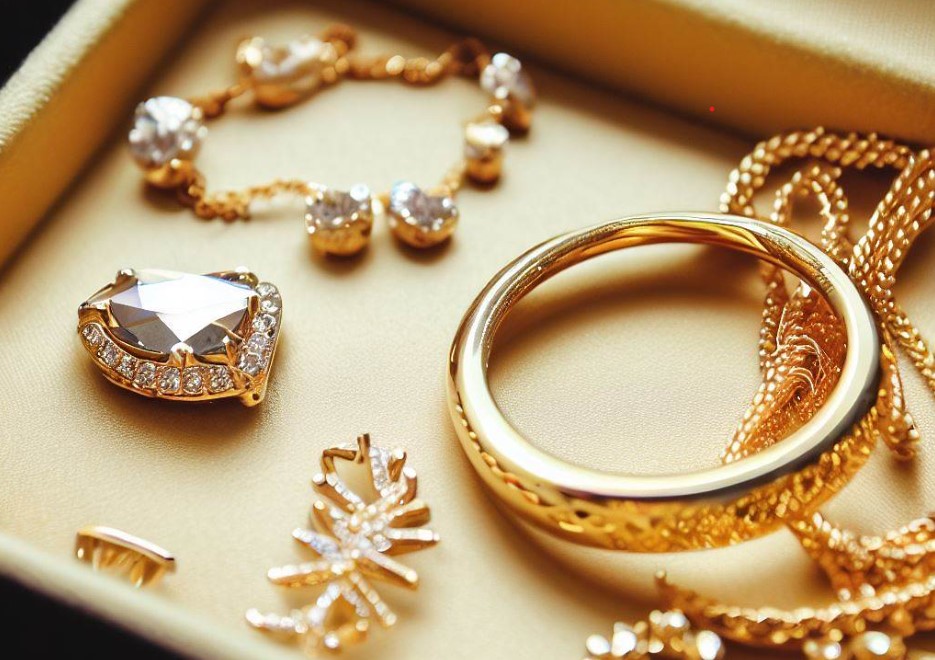The allure of diamonds has captivated the world for centuries, symbolizing luxury, commitment, and prestige. Given their monetary and sentimental value, it’s essential to determine their authenticity. Here are ten tests that tell whether your diamond is real or fake.
1. The Fog Diamond Test:
Breathe on the diamond, much like you would if you were cleaning eyeglasses. Genuine diamonds disperse heat instantly, so it is likely real if the fog clears immediately. If it takes a few seconds for the fog to dissipate, you might deal with a fake.
2. The Water Diamond Test:
Fill a glass three-quarters full with water. Gently drop the diamond into the glass. Due to their high density, natural diamonds will sink. You probably have a fake if it floats underneath or at the water’s surface.
3. The Heat Diamond Test:
Diamonds are incredibly durable and can withstand high heat. Place the stone under a flame (use tweezers to hold it) for around 30 seconds, and then immediately drop it into a glass of cold water. A genuine diamond will be unaffected, while many fakes will shatter.
4. Inspecting with a Loupe:
A jeweler’s loupe is a magnifying glass used to see tiny details. Genuine diamonds usually contain minor imperfections or inclusions, often called “nature’s fingerprints.” If it’s too perfect, it might be synthetic or a simulant. Conversely, if you see tiny bubbles, it could indicate that the stone is glass.
5. The Newspaper Diamond Test:
Lay the diamond flat on a newspaper. If you can read the print or see black streaks through the stone, it’s likely fake. Genuine diamonds refract light in various directions, making it nearly impossible to see clearly through them.
6. Checking the Setting and Mount:
Natural diamonds are typically set in gold, platinum, or white gold. Check the inside of the ring’s setting for any stamps. Markings like “10K,” “14K,” “18K,” “PLAT,” or “P.T.” indicate the metals used, which are commonly associated with natural diamonds. On the other hand, “C.Z.” suggests that you have cubic zirconia.
7. Professional Appraisal:
The most accurate way to determine a diamond’s authenticity is to examine it by a certified gemologist. They use specialized tools and techniques, ensuring a definitive answer about your stone’s authenticity.
8. Ultraviolet Light Diamond Test:
Many natural diamonds will emit a blue-colored glow when placed under ultraviolet light, though not all genuine diamonds show this trait. A lack of fluorescence doesn’t confirm it’s fake, but an unexpected glow might suggest it’s not a natural diamond.
9. Electrical Conductivity Diamond Test:
Diamonds, especially those containing boron, conduct electricity. One of the latest methods to differentiate between natural diamonds and their most common lookalike, moissanite, is to use a tester that measures electrical conductivity. Natural diamonds won’t conduct electricity, while moissanite will.
10. Price:
If a deal sounds too good to be true, it often is. Genuine diamonds come with a hefty price tag. If someone offers you a diamond at a fraction of its expected cost, approach cautiously.
While these tests provide good initial assessments, it’s always best to consult a professional when in doubt. Remember, the value of a diamond isn’t just in its authenticity but in the memories and sentiments attached to it.
Here’s why it’s essential to find out if your diamond is real or fake:
1. Financial Value:
- Investment: Diamonds are expensive, and their value can fluctuate based on clarity, color, carat, and cut. Owning a genuine diamond represents a significant financial investment. If you’re purchasing a fake at the price of a natural diamond, you incur a substantial financial loss.
- Resale Value: Real diamonds hold value over time and can even appreciate, depending on market conditions. If you ever need to or choose to sell your diamond, its authenticity plays a crucial role in its resale value.
2. Emotional Significance:
- Sentimental Value: Diamonds often mark significant moments in our lives – engagements, weddings, anniversaries, or heirlooms passed down through generations. Knowing that such a symbol is genuine enhances the sentiment attached to it.
- Trust and Honesty: If gifted a diamond, discovering it’s fake could strain relationships or lead to feelings of betrayal, significantly if the giver believed it was genuine.
3. Insurance and Documentation:
- Appraisals: Insurance companies require professional inspections to ensure or replace jewelry. Knowing your diamond’s authenticity is crucial for accurate documentation.
- Insurance Claims: In the unfortunate event of theft or loss, insurance companies will compensate based on the diamond’s documented value. If your diamond is revealed to be fake during a claim process, it might lead to disputes or reduced compensation.
By the way, you can read about jewelry insurance on our website.
4. Durability and Longevity:
- Wear and Tear: Genuine diamonds are one of the hardest-known materials. They resist scratches and retain their brilliance over time. Fakes, however, are prone to damage, showing signs of wear far quicker.
Determining a diamond’s authenticity isn’t just a matter of economic value. It intertwines with sentiments, trust, ethics, and cultural significance. As with any significant investment, whether emotional or financial, it’s crucial to ensure its genuineness. Ensuring you have a real diamond honors its intrinsic value and the moments and emotions it represents.
And at last, here is a relaxing joke about fake diamonds:
– Why did the fake diamond go to school?
– To become a little “brighter”!
Ciao! I am Salvatore, a master jeweler from the mesmerizing island of Sicily. With a wealth of experience spanning over ten years, I take great pride in my exceptional craftsmanship and meticulous attention to detail. My expertise lies in both traditional and contemporary jewelry designs, where I seamlessly blend the rich history and culture of my beloved Sicily into each distinctive piece.




